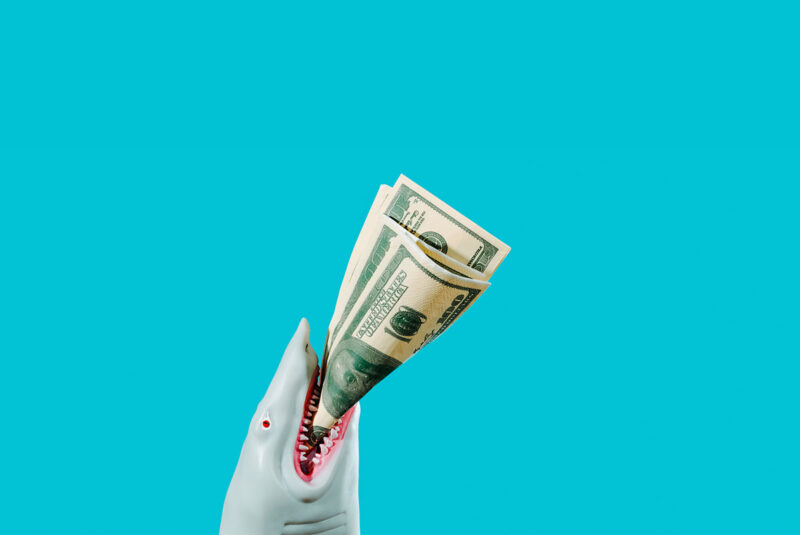There are times when you need money. You could opt for a personal loan or a home equity loan, but there is another option.
A personal line of credit.
It’s not as widely advertised by banks and other lenders, compared to credit cards or other kinds of loans. But if you need money and flexibility, a personal line of credit may be the answer to your problem.
Kinda like the team from your favorite action movie.
Okay, maybe a personal line of credit isn’t the A-Team or the Expendables, and nowhere near as exciting as Tom Cruise falling off a building, but it can be a helpful financial tool when you need money to cover large expenses.
What Is a Personal Line of Credit: Respect the Skills
A personal line of credit is a flexible loan that uses revolving credit – like a home equity line of credit (HELOC) or a credit card – that you can get from a bank, credit union or another lender.
With a personal line of credit:
- You get a credit limit you can borrow against
- The lender charges a variable rate based on current interest rates
- You’re charged interest only on the money you borrow
- When you pay off your balance, you can rebuild your available credit
- Your credit line is an unsecured loan, so you don’t have to worry about losing your home or other collateral if you can’t make your monthly payments
Depending on your lender:
- You may be eligible for a credit line ranging from $10,000 – $100,000 or more
- Interest rates tend to be lower than a credit card but higher than a home equity loan or HELOC
- You usually need to make minimum monthly payments that equal 1% – 2% of your balance or pay a minimum fee ranging from $25 – $100 (whichever is higher)
How Do I Apply for a Personal Line of Credit: Your Mission
Applying for a personal line of credit is similar to applying for a personal loan with your bank or lender. You can shop for rates online and then you’ll need to submit an application and provide the lender with access to your credit score and credit history.
Lenders will use that information to decide:
- Whether they can approve you
- What size line of credit they can offer
- What they will charge you in interest
In some cases, you can get approved in as little as 24 hours.
Keep in mind that lenders may charge an origination fee, annual fee and other fees, so know your terms before you sign.
Once you’re approved, your lender will either provide you with a debit card or checkbook (for anyone who still uses paper checks), or you can transfer the money from your line of credit to your checking account.
Personal Line of Credit vs. The Rest: Know the Competition
If you’re just learning about personal lines of credit, it’s probably because they’ve been overshadowed by their more popular rivals. Take a look and see how they stack up.
Home equity line of credit (HELOC)
A personal line of credit and a HELOC are very similar. Both use revolving credit and both allow you to draw money when needed and pay it back over time. The big difference is the “H” and the “E”, the home equity.
With a HELOC, you agree to borrow against your home equity and your home acts as collateral. This makes the loan less risky for the lender, so you’re likely to get a lower interest rate.
Personal loan
The biggest difference between a personal loan and a personal line of credit is how the money is distributed. With a personal loan, you borrow a lump sum and agree to pay it back over a set period of time at a fixed interest rate.
This is great if you’re making one big purchase, but if you’re making a series of purchases over time, you’ll wind up paying for interest on money you haven’t spent yet.
Credit card
You may be thinking, “Hey, why do I need a credit card if I can get a personal line of credit?”
Here’s why: While a line of credit offers quick money, credit cards are better suited to smaller ordinary purchases because the funds are easier to access, accepted in more places and the smaller monthly minimum payments are easier to fit into your monthly budget.
Also, credit cards can offer reward points, fraud protection, 24/7 customer service and a card lock option for when you forget where you left your card.
Small business line of credit
A small business line of credit is almost the same thing as a personal line of credit. The key difference? Who’s taking out the credit line, you or your business?
To get a business line of credit, you need to have been in business for 6 months or more, and you must be able to put up some kind of collateral.
Do I Need a Personal Line of Credit: When To Signal the Team
A personal line of credit can be helpful if you know that you’ll need access to a larger amount of money on short notice. There are a few situations where a personal line of credit can be a lifesaver.
Home improvement
If you want to upgrade your home, a personal line of credit gives you the money you need to buy materials and pay contractors. This is especially true if you don’t have enough equity to qualify for a HELOC, or you don’t have time to wait for a home equity loan or line of credit.
Special events
Are you planning a special event (like a wedding, a dream vacation or a destination wedding to your dream vacation spot)? You may encounter vendors who require large, upfront deposits or won’t take credit cards.
A personal line of credit makes it easier to pay people in advance without worrying about emptying your bank account or maxing out your credit cards.
Self-employed
If you’re self-employed, there may be times when business is booming, slow or your clients don’t pay on time.
If you can’t qualify for a small business line of credit, a personal line of credit can help you cover expenses, invest in your business and help make ends meet as you grow your cash flow.
Emergency fund
One of the absolute rules of life is that things can and will go wrong. Having the money available for emergencies and other unexpected expenses is one way to be ready when that happens.
Even if you don’t need the money now, setting up a personal line of credit now can help you be ready in case of emergencies. And when you compare it to the higher interest rates on a credit card cash advance or payday loan, it can also save you money.
Overdraft protection
If you’re concerned about being overdrawn on your checking account, you can talk to your bank about adding a line of credit to your account that serves as overdraft protection. If you’re overdrawn, the money comes from your personal line of credit and you can avoid fees.
Is a Personal Line of Credit the Right Solution: The Power Is in Your Hands
A personal line of credit can be a great way to pay for large expenses without the challenges or risks of using your home or business as collateral. It’s also a great way to maintain flexibility with when and how you’re charged for interest.
Just remember to use your newfound power responsibly.
The Short Version
- A personal line of credit can give you access to larger sums of money when you need it
- Personal lines of credit are unsecured, so you don’t need collateral or home equity
- Personal lines of credit are different from other types of credit, like credit cards, home equity loans and personal loans




